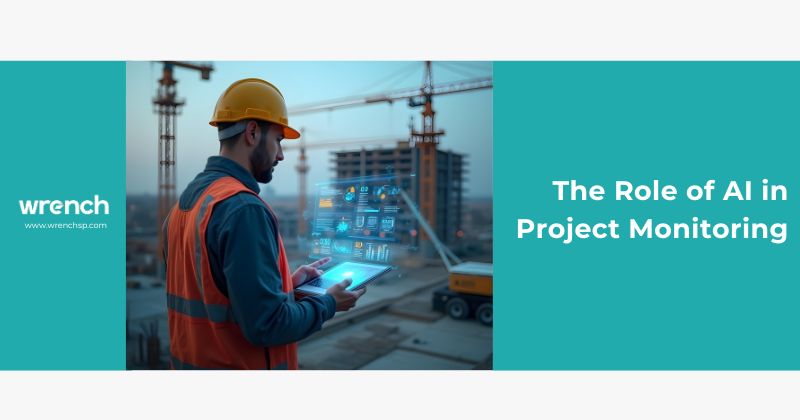Avoid Scope Creep And Disputes Using a Digital Platform

The topic reminds me of an incident: during the execution of an office project where the inauguration was a mere 3 weeks away, the client’s facility management head suddenly decided to share his idea of making modular meeting rooms inside the office. The idea got serious. The general contractor refused to take on the work and so a new contractor had to be finalized, following the whole procurement process at the completion of the project, and the contractor actually was brought on after the inauguration of the office! The shop drawings got approved but the lead time was 10 weeks and the project close-out had been scheduled for 8 weeks – so even as the office got occupied and people started working in the office, there were contractors still carrying out work from 8 PM till 6 AM and on weekends. This got the project team in trouble as they had to get the client’s permission for carrying on work even after the scheduled technical closeout of the project. The upshot was that getting the project closure certificate from the client was delayed.
The reason I’m relating this incident is because it is an excellent illustration of scope creep, and how additional works at last minute can lead to losses. Sometimes clients are not ready to pay the project management consultancy, and this leads to them suffering losses. And it’s not an uncommon situation, such incidents happen all the time with serious consequences.
In other words, scope creep is a serious problem that needs to be taken seriously – and avoided as rigorously as possible.
Scope creep and its Sources
What is scope creep? Scope creep is, in its simplest form, when a project needs, objectives, or vision shift from what was first planned. Scope creep isn’t just bad for project managers, it’s bad for everyone – the team, the stakeholders, the project, and the organization.
One of the major problems facing project managers in the construction industry is scope creep, but you cannot avoid it.
So what causes scope creep? Scope creep typically happens when:
- Project stakeholders want to decide which features are most important.
- Senior team members or managers strive to maintain client satisfaction.
- Managers or senior team members want to keep clients happy.
- There is poor or insufficient requirement gathering of the scope
- There is weak project management (i.e. not being able to keep the project on schedule and budget)
- You are not able to create a shared vision with stakeholders.
- There is poor communication protocol
- You get multiple feedbacks from multiple users during the project completion
When you consider the potential drivers of scope creep in construction projects, it is evident that you experience them at least once during the project. Having a good plan for how to deal with them is, therefore, the smartest thing to do. The overall approach makes a difference, even if problem-specific solutions are used to stop scope creep.
Keeping Scope creep at arms length
Fortunately, these days with the latest technologies it is possible to avoid scope creep by instituting a few key changes in the way you work, like:
- Being aware of the project scope of works from the initiation of the project (no member of the project team should be unclear on what the scope of the project is).
- Having access to timely, accurate and up to date documentation at all times
- Prioritizing the tasks properly.
- Relying on software rather than manual efforts to ensure the correct scheduling and monitoring of all the aspects of a project – time, cost, risk, quality, EHS etc.
- Setting up a proper change control process (which is linked to actual project performance parameters) which governs each aspect of change management, from proposing a change, to identifying the full summary of its impact, to the actual decision, to implementing the change, and finally to closing the change.
- Setting up realistic schedules based on accurate data
- Setting up an effective communication protocol with a clear roles &responsibility matrix, and ensuring strict adherence to it. This will help streamline communication and make people proactive in initiating change requests and ensure that the client provides approvals on time.
- Taking steps to protect your team against “Gold plating”, the all-too-common phenomenon of wanting to keep on ‘improving’ something even after it has fulfilled the brief (a very risky proposition!).
Scope creep can be managed effectively with the right strategy. The emphasis should be on client satisfaction without sacrificing profitability or efficiency. When dealing with scope creep, automating your organization with a construction management software system is an excellent option because it secures you on various fronts.With a digital solution, the majority of the tasks which would otherwise have to carried out manually (and therefore not documented properly) can be handled by the system or within the system. It can help you with several things, like providing transparent communication with stakeholders to improve estimation accuracy and manage budgets and timetables.
To sum up, no one likes scope creep or the invariable disputes that are the fall out. Looking at the preventive measures, going digital is the best option.
Shabna has over 7+ years of experience in the construction project management sector, having worked with leading consultancies like AECOM, Colliers, and CBRE. She is a Civil Engineer with a Master’s degree in Building Engineering and Management from SPA, New Delhi, and has a deep understanding of project management processes with a focus on project controls and presentation.
Related Posts

What is an EDMS?
EDMS has become popular in the EPC world in the last decade, especially after the pandemic. What is EDMS? At its core, EDMS is an electronic document management system or a software that organises and…
- 20 Mar 2025

The Role of AI in Project Monitoring
As AI continues to make inroads into every industry in the world and the buzz around it continues to grow, we’re seeing EPC organisations leave behind their historical hesitation about emerging technologies; in fact we’re…
- 13 Mar 2025
Archives
- March 2025
- February 2025
- January 2025
- November 2024
- October 2024
- September 2024
- August 2024
- July 2024
- June 2024
- May 2024
- April 2024
- March 2024
- January 2024
- December 2023
- November 2023
- September 2023
- August 2023
- July 2023
- June 2023
- May 2023
- April 2023
- March 2023
- February 2023
- January 2023
- December 2022
- November 2022
- September 2022
- June 2022
- May 2022
- April 2022
- March 2022
- January 2022
- November 2021
- October 2021
- July 2021
- June 2021
- May 2021
- March 2021
- February 2021
- January 2021
- December 2020
- November 2020
- September 2020
- August 2020
- June 2020
- April 2020
- March 2020
- February 2020
- January 2020
- November 2019
- October 2019
- September 2019
- August 2019
- April 2019
- March 2019
- December 2018
- October 2018
- September 2018
- August 2018
- July 2018
- June 2018
- May 2018
- April 2018
- January 2018
- November 2017
- October 2017
- September 2017
- May 2017
- April 2017
- March 2017
- February 2017
- January 2017
